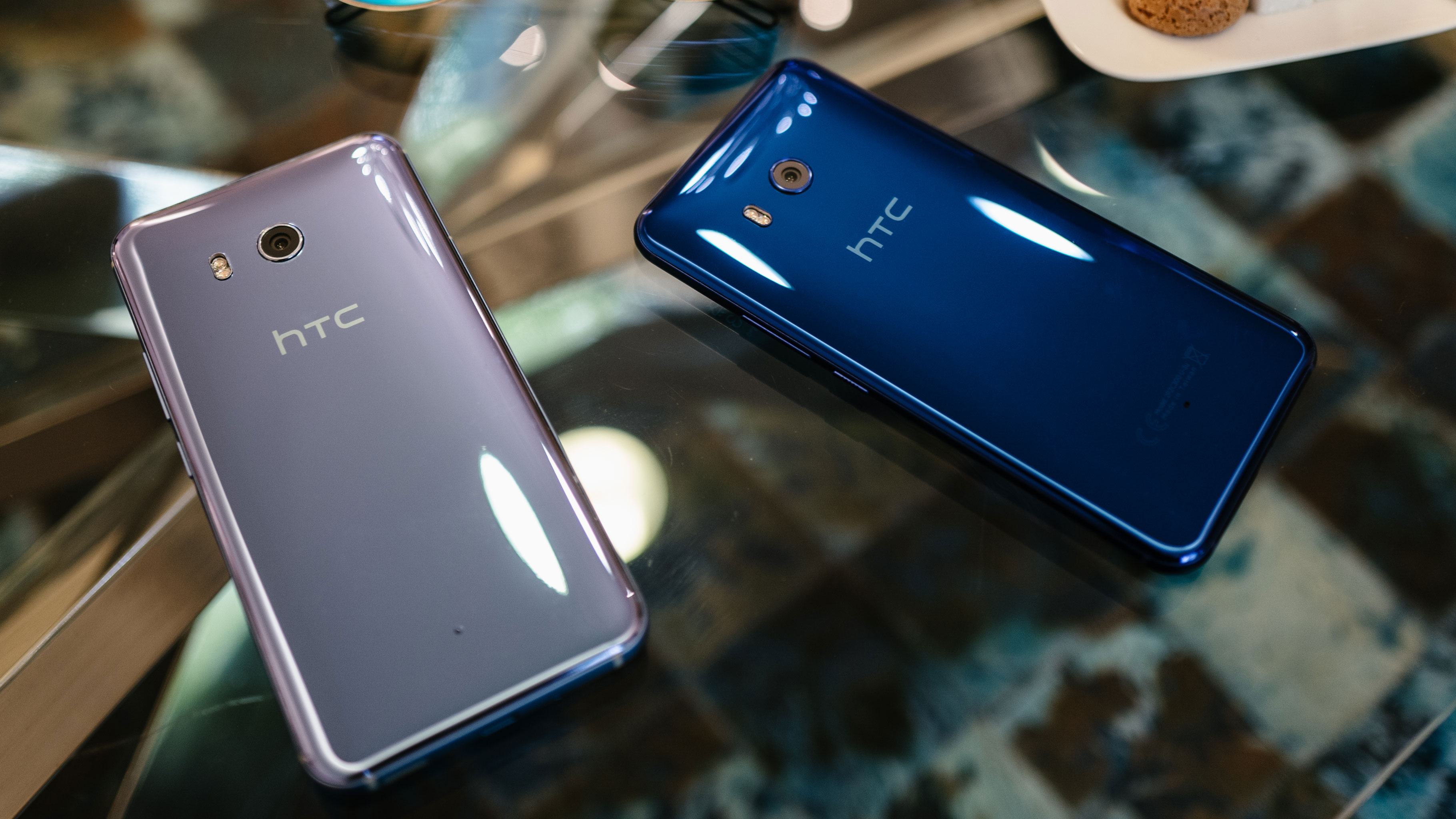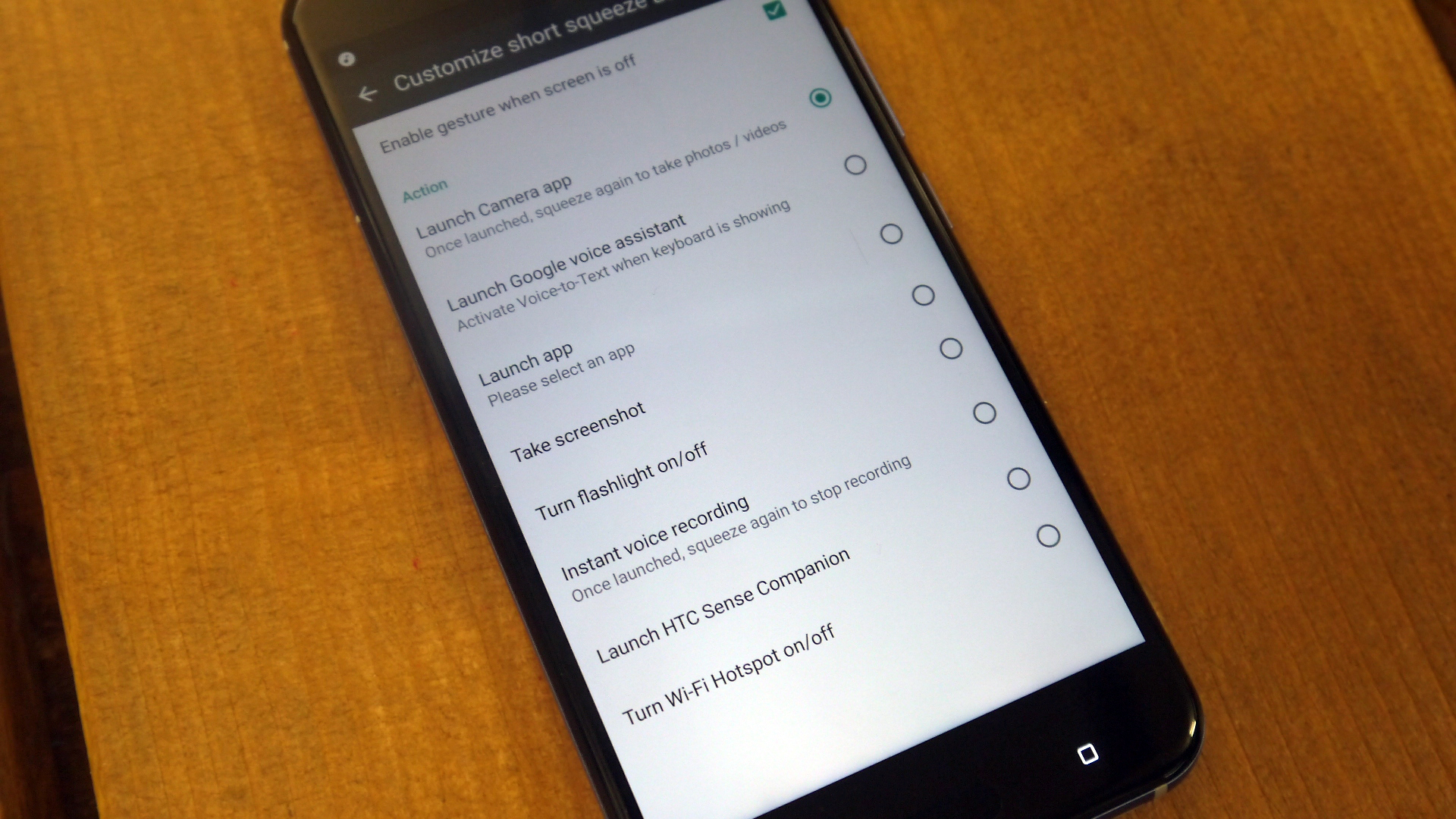Edge Sense: the HTC U11’s killer feature explained

The HTC U11 has a lot going for it, but the feature HTC has pushed - or, should that be squeezed - most is Edge Sense.
That's the official name for the phone's pressure-sensitive frame, a feature which was rumored and leaked long before the HTC U11's official announcement.
But how exactly does it work? And how much can it actually do? Read on for the answers to those questions and more.
- Read our in-depth hands on HTC U11 review
What is Edge Sense?
Edge Sense is a feature which enables you to squeeze the sides of the HTC U to interact with the phone in a variety of ways.
Specifically, you squeeze the sides on the bottom half of the handset, with both short squeezes and long squeezes supported, allowing you to do two different things.
Interactions could take various forms, which we’ll cover below, but it's mainly used for launching apps or specific features.
Essentially then, Edge Sense is a bit like having a customizable button all up and down the phone – albeit one which you’ll want to show off to friends.
Sign up for breaking news, reviews, opinion, top tech deals, and more.

What can Edge Sense do?
Out of the box, Edge Sense will launch the HTC U11's camera with a short squeeze and start Google Assistant with a long one, but if you'd rather map the functions to something else you can.
And when we say something, we mean anything, be it launching an app, turning on the torch, starting an audio recording or any other function of the phone.
Come July, you'll be able to expand this functionality massively, allowing you to contextually change what the squeezing does depending on what app you're in.
HTC tells us this will be enabled for any app, without the need for developer interaction, so could be a really cool way to personalise your phone and the way you interact with it.

Is Edge Sense more than a gimmick?
Edge Sense is a brand new way of interacting with your phone and, when the contextual features are enabled, has an enormous amount of potential, but we also have some concerns.
For one thing, although you can customize the level of pressure necessary to activate Edge Sense, even the lowest level involves squeezing quite hard.

This is understandable to some extent, since HTC obviously doesn't want it to accidentally go off in your hand or pocket, but it makes the feature feel less intuitive than it could.
That's something that could be changed with a software update, but what can't be is the lack of feedback when squeezing. You get a slight buzz, but no physical movement in the frame.
It might well be something that you'll just need to get used to, but it doesn't feel as natural as a finger gliding over a touchscreen.
Which other phones will be getting Edge Sense?
Well, at the moment, none. That's because this is a hardware feature baked only into the HTC U11, so it's not going be able to retro-fitted onto older models.
However, it all depends on how the U11's ability to be squeezed is - if it's popular (and works well) this will likely become a feature of all the top-end HTC phones.
Then again, we've seen multiple handset features be launched to great fanfare (Air View on the Samsung Galaxy S4, anyone?) only to sink quickly below the surface, never to be used again.
Given having Edge Sense functionality in the phone requires extra hardware, if it's not a success we can see HTC dropping it rather quickly.
See Edge Sense in action with our HTC U11 hands on video
- Hopefully the HTC U11 will be better than the HTC U Ultra
James is a freelance phones, tablets and wearables writer and sub-editor at TechRadar. He has a love for everything ‘smart’, from watches to lights, and can often be found arguing with AI assistants or drowning in the latest apps. James also contributes to 3G.co.uk, 4G.co.uk and 5G.co.uk and has written for T3, Digital Camera World, Clarity Media and others, with work on the web, in print and on TV.